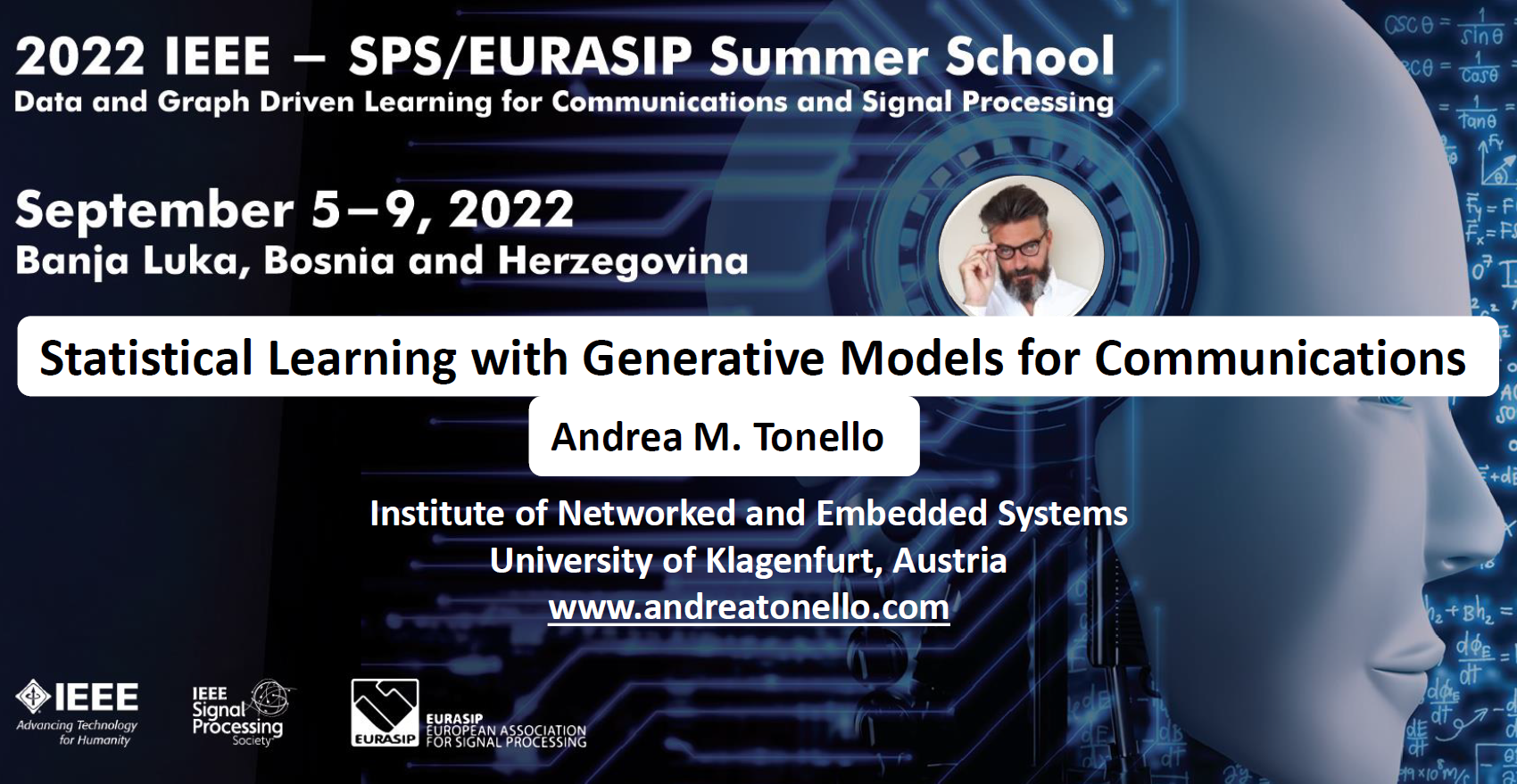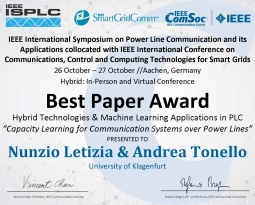Learning the statistics of physical phenomena has been a long-time research objective. The advent of machine learning methods has offered effective tools to tackle such an objective in several data science domains. Some of those tools can be used in the domain of communication systems and networks. We should, however, distinguish between data learning from signal learning. The former paradigm is typically applied to higher protocol layers, while the latter to the physical layer. Historically, stochastic models derived from the laws of physics have been exploited to describe the physical layer. From these models, transmission technology has been developed and performance analysis carried out. Nevertheless, this approach has shown some shortcomings in complex and uncertain environments. Based on these preliminary considerations, I have initiated some new research with my students which I have documented in a recent talk at the 2022 IEEE-SPS/EURASIP Summer School on “Data and Graph Driven Learning for Communications and Signal Processing”.
The lecture has focused on generative models capable of firstly learning the hidden/implicit distribution and then generating synthetic signals. I have reviewed the concept of copula and motivated the use of recently introduced segmented neural network architectures that operate in the uniform probability space. The application of such generative models to classic (but still open) problems in communications have been illustrated, including: synthetic channel and noise modeling, channel capacity estimation, coding/decoding design in unknown channels.
A key enabler component is the ability to estimate mutual information. This has led us to the description of novel estimators and their application to learning the channel capacity, which is an ambitious goal being capacity mostly unknown even for channels analytically described.
The lecture has substantiated the theoretical aspects with several application examples not only in the wireless communication context but also in the less known power line communication domain; the latter domain being perhaps more challenging giving the extremely complex nature of the channel and noise.
Further readings
[1] A. Tonello, “Statistical Learning with Generative Models for Communications,” IEEE – SPS/EURASIP Summer School on “Data and Graph Driven Learning for Communications and Signal Processing”, September 2022.[2] A. Tonello, N. Letizia, “MIND: Mutual Information Based Neural Decoder,” IEEE Communications Letters, 2022.
[3] N. Letizia, A. Tonello, “Capacity-driven Autoencoders for Communications,” IEEE Open Journal of the Communications Society, June 2021.
[4] N. Letizia, A. Tonello, “Segmented Generative Networks: Data Generation in the Uniform Probability Space,” IEEE Trans. on Neural Networks and Learning Systems, December 2020.
[5] A. Tonello, N. Letizia, D. Righini, F. Marcuzzi, “Machine Learning Tips and Tricks for Power Line Communications,” IEEE Access, June 2019.
[6] N. Letizia, A. Tonello, “Discriminative Mutual Information Estimation for the Design of Channel Capacity Driven Autoencoders,” BalkanCom 2022.
[7] N. Letizia, A. Tonello, “Capacity Learning for Communication Systems over Power Lines,” IEEE ISPLC 2021.
[8] N. Letizia, A. Tonello, “Discriminative Mutual Information Estimation for the Design of Channel Capacity Driven Autoencoders,” arXiv:2111.07606[cs.IT], November 2021
[9] N. Letizia, A. Tonello, “Discriminative Mutual Information Estimators for Channel Capacity Learning,” arXiv:2107.03084[cs.IT], July 2021







